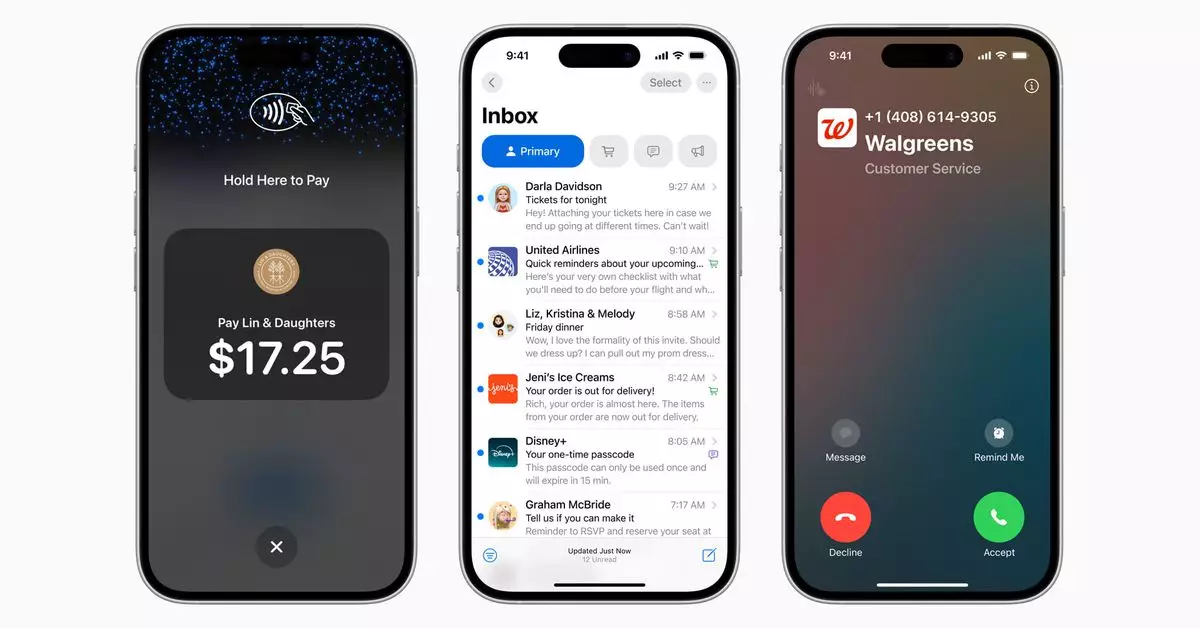Apple continues to innovate its ecosystem by introducing features that allow businesses to enhance their presence on iPhones and, ultimately, improve user engagement. The recent announcement regarding the customization of brand visibility across various applications represents a significant leap in how companies can communicate their identity through technology. By allowing businesses to display their names and logos in email, phone calls, and payment processing, Apple is positioning itself as not just a tech provider, but a facilitator of commercial connection.
In an era where digital communication is saturated, distinguishing one’s brand becomes crucial. Apple’s Business Connect tool, launched last year, has already enabled companies to manage their listings across platforms like Maps and Siri. Now, the option to personalize email appearances with branded logos is a strategic move towards enhancing visibility. This feature, branded as Branded Mail, can significantly reduce the chances of emails being overlooked by users swamped with countless unread messages. By providing a mechanism for brand recognition, companies can play a pivotal role in establishing trust and enhancing their messaging priorities.
Apple is also addressing caller identification issues with its new Business Caller ID feature. By allowing businesses to present their names, logos, and even departmental designations on inbound calls, users will have clearer insights into who is contacting them. As spam calls have surged in recent years, this addition not only stands to benefit consumers but also establishes a robust identity for genuine businesses amidst a sea of unknown numbers. This initiative also reflects Apple’s commitment to improving user experience—it contributes to a more organized, informative interaction with callers who may otherwise seem suspicious.
In tandem with this, modifications to the Tap to Pay service enable companies to display their branding when processing payments. This not only enhances recognition during transactions but also reinforces brand loyalty as consumers become accustomed to associating the payment process with familiar logos. These efforts indicate that Apple is catering to the evolving needs of consumer perception in financial dealings—creating a seamless journey from awareness to purchase.
By centralizing brand visibility across its platforms, Apple may be laying the groundwork for a unique competitive advantage that could pivot its operations towards advertising. As verified business information accumulates, Apple could leverage this data for future service offerings, possibly even developing proprietary search functionalities that minimize reliance on external platforms like Google and Yelp. This shift would not only enhance Apple’s ecosystem but could also reshape the landscape of brand engagement, albeit introducing complexities in competition with established advertising giants.
As Apple unveils these features for businesses, it demonstrates a keen understanding of the digital landscape. By investing in customized communication tools, Apple is poised to empower brands while simultaneously enhancing consumer experience. As consumers become more conscious of their interactions, the ability for businesses to present a verified, recognizable identity will become a vital asset. This shift heralds a new era where technology acts as a bridge, strengthening relationships between consumers and businesses through transparent, branded engagements.


Leave a Reply
You must be logged in to post a comment.